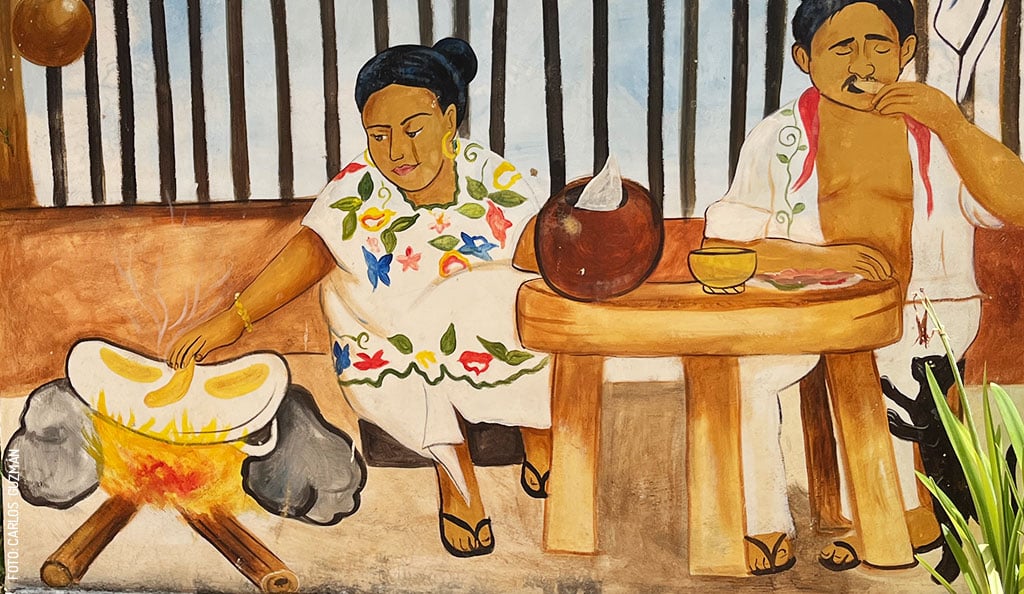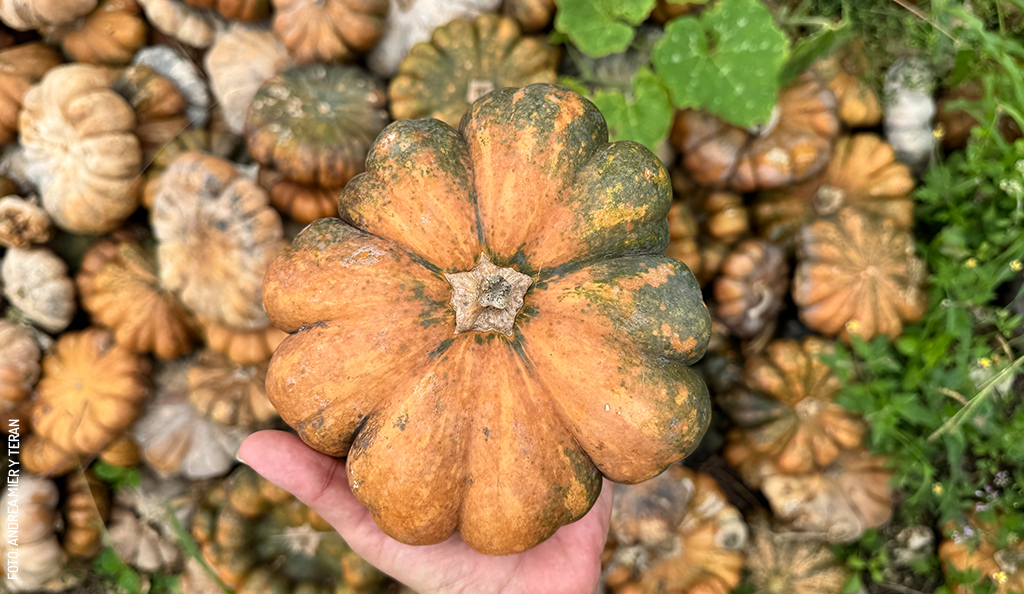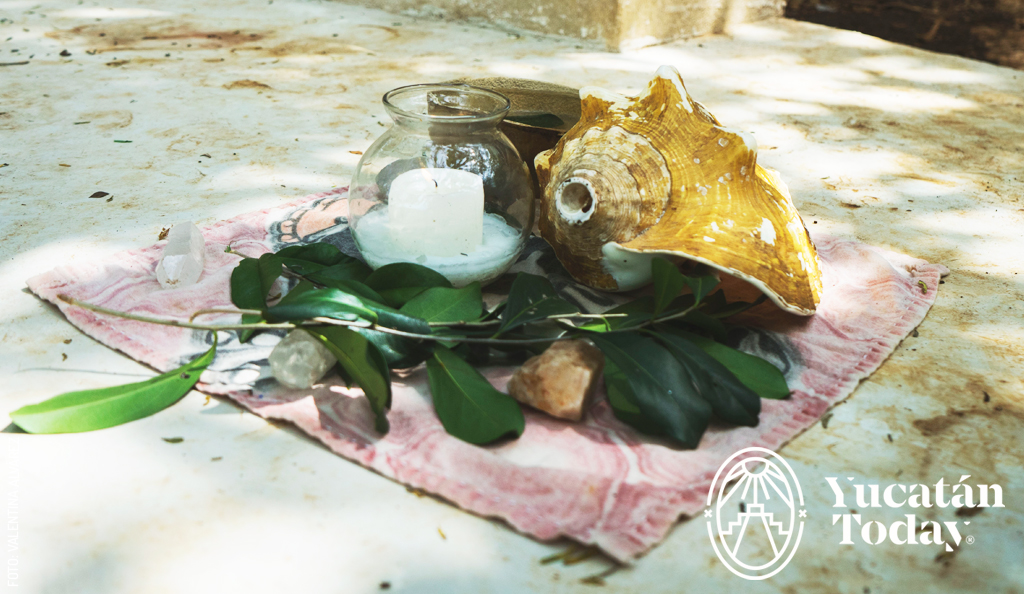
True to the Essence: The Maya Kitchen and Its Cultural Significance
The kitchen is more than just a space for preparing meals; it's the heart of the home, where traditions, flavors, and ancestral knowledge converge. In the context of Maya culture, the kitchen not only serves its practical function but also embodies profound cultural and social significance.
The construction and structure of the Maya kitchen
According to Dr. Aurelio Sánchez, in a traditional Maya household, the kitchen stands out as a separate structure from the rest of the home. Typically located at the rear and near the living area, its construction follows specific rhythms and traditions. For instance, the gathering of wood for the walls and roof takes place during the full moon, as it's believed to ensure greater resistance to pests. The "bajareque" (or Koloojche'), a woven structure of flexible woods, is an essential component in these kitchen constructions, ensuring not only the durability of the structure but also preserving age-old knowledge.
The roof, made of organic materials like grass, palm leaves, or straw, reflects the close relationship of the Maya with nature. Carefully tied to the wooden framework by skilled "house-tying" masters, these materials provide adequate protection against the elements while maintaining the kitchen's cool and welcoming ambiance.
Fusion of flavors: contemporary Maya cuisine
Turning to the topic of contemporary Maya cuisine, it's a fusion of ancient flavors and modern techniques. The importance of the "milpa" (cornfield) and traditional ingredients such as maize, beans, pumpkin seeds, annatto, chili, and Yucatecan oregano remains fundamental in gastronomy.
The three-stone hearth and the Píib: culinary techniques and rituals
Within this space, the three-stone hearth or K’óoben, situated at ground level, is the heart of the traditional Maya kitchen. Around it, low furniture like the "banqueta" and the round table for making corn tortillas, along with other indispensable tools for daily life, are arranged. All these components maintain harmony between functionality and tradition.

However, the hree-stone hearth is not the only cooking method for food. One of the most iconic cooking techniques in traditional Maya cuisine is known as Pibil, which refers to food cooked in a Píib. This method involves using an underground oven (the Píib), dug into the characteristic red earth of the region. Once the pit is prepared, a fire is lit with dry or green wood (depending on what you want to cook), generating heat that warms the pit walls. The food is placed inside the hot pit and then covered with tree leaves like Pixoy (Guazuma ulmifolia), coconut palm, or straw, creating a natural lid that seals the Píib.
Both the Píib and the K’óoben are not just culinary techniques; they are also deeply rooted rituals in Maya culture, as they require a deep understanding of fire and its possibilities. These and many other cooking methods, which bring different nuances and aromas, are used in celebrations and special occasions, where food preparation and consumption become significant community events.
During these festivities, it's common to prepare traditional dishes such as Relleno Negro (a spicy turkey/chicken and pork dish), typically served at weddings; Cochinita Pibil (roasted pork with annatto), a typical dish for baptisms; and Frijol con Puerco (pork and black beans), offered at funerals.
Challenges and preservation of the cultural legacy of the Maya kitchen
Despite their cultural importance, Maya kitchens have faced challenges since colonization. The mistaken perception of these constructions as indicators of poverty has led to the destruction of their vernacular architecture. Furthermore, internal colonialism has marginalized these communities, hindering the recognition and appreciation of their architectural heritage.
It's essential to take measures to safeguard the rich cultural legacy of Maya kitchens. This involves not only preserving culinary techniques but also involving communities in the conservation of their architectural heritage. Promoting state recognition of these structures as integral to cultural identity and ensuring that the benefits of fair trade reach communities directly are crucial steps in this process.
.jpg) Fortunately, in recent years, a decolonization movement has emerged within the Maya people. From the communities themselves, education and social awareness against the excessive exploitation of natural resources and the commercialization and touristification of their heritage are being promoted. Chef Wilson Alonzo runs the ethno-gastronomic center Ya'axché in Halachó. Through his work, he not only teaches culinary skills but also strives to instill the cultural and social value of Maya cuisine. Through workshops and masterclasses where you can prepare dishes with the cooking techniques mentioned above, he seeks to create awareness and commitment in people who visit the center to ensure that these traditions are promoted and kept alive.
Fortunately, in recent years, a decolonization movement has emerged within the Maya people. From the communities themselves, education and social awareness against the excessive exploitation of natural resources and the commercialization and touristification of their heritage are being promoted. Chef Wilson Alonzo runs the ethno-gastronomic center Ya'axché in Halachó. Through his work, he not only teaches culinary skills but also strives to instill the cultural and social value of Maya cuisine. Through workshops and masterclasses where you can prepare dishes with the cooking techniques mentioned above, he seeks to create awareness and commitment in people who visit the center to ensure that these traditions are promoted and kept alive.
In a world where culture and tradition are often in danger of disappearing, the space dedicated to Maya cuisine and gastronomy reminds us of the importance of preserving our roots and valuing Yucatan's cultural heritage. By uniting cuisine with ancestral knowledge and social commitment (always being respectful of traditions other than our own), we can ensure that these traditions endure far beyond our lifetimes, recognizing that in preserving the past lies the key to a sustainable and enriching future.
We thank Dr. Aurelio Sánchez Suárez and chef Wilson Alonzo, whose insight made this article possible.
Photography by Alicia Navarrete for its use in Yucatán Today.

Author: Sara Alba
Panamanian with a Mexican accent since 2005. Editorial Assistant, a walking jukebox, and always lurking on social media, in the constant search of hidden gems to visit and share.
Receive the latest articles and much more from the best of Yucatán in your email!
Related articles

Memory Preserved in Flavor: Yucatán’s Traditional Cooks
Discover K'óoben in Maní: Doña Martha Pat Cetina's kitchen. Ancestral Yucatecan flavors, heritage, and love in every traditional dish.
The Origin of Our Table: The Maya Milpa
The Mayan Milpa: More than a crop, an ancestral vision. Discover the "Mesoamerican triad": corn, beans, and squash in Yucatán.




